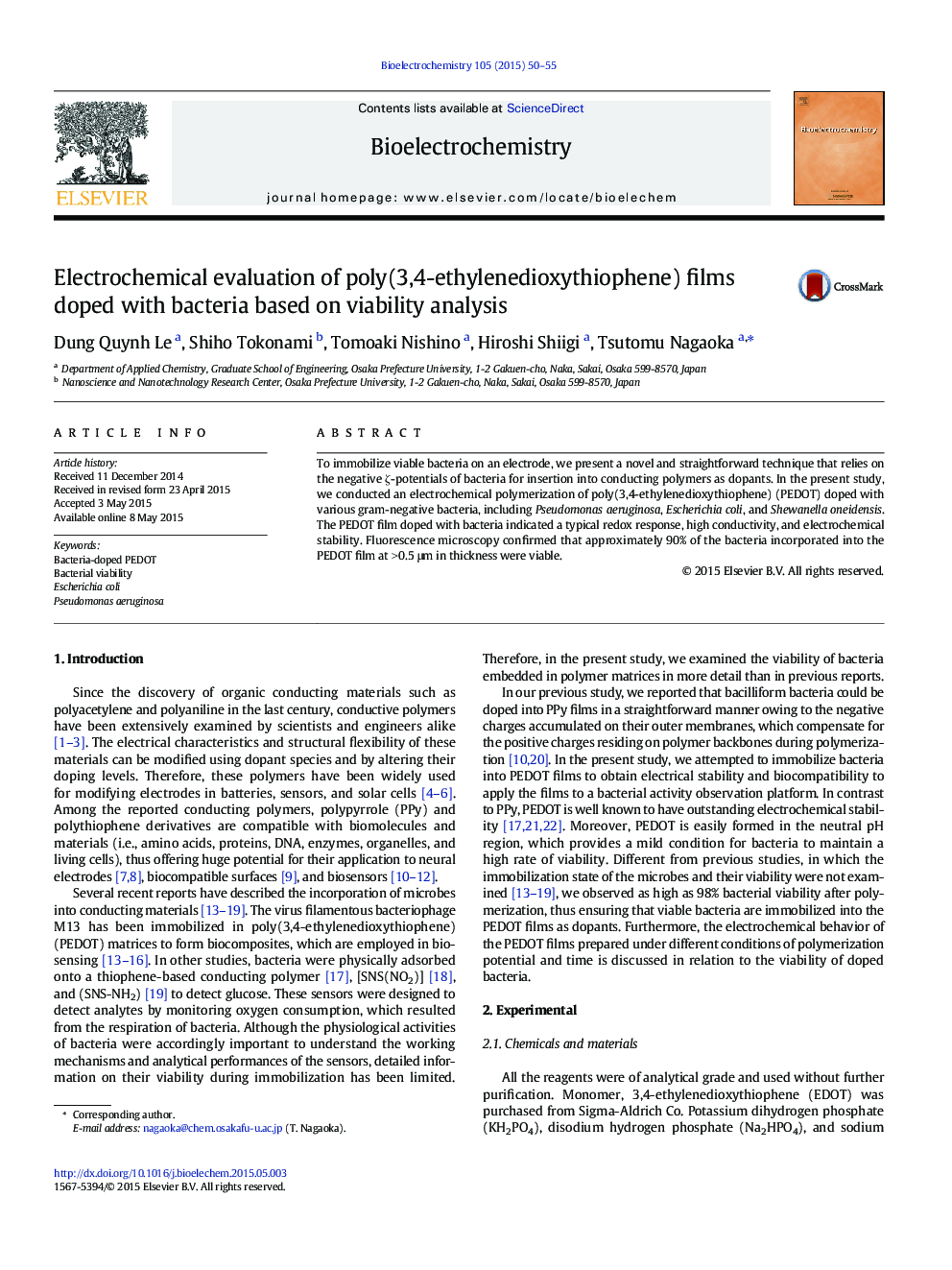| Article ID | Journal | Published Year | Pages | File Type |
|---|---|---|---|---|
| 1273898 | Bioelectrochemistry | 2015 | 6 Pages |
•Bacteria are easily doped in/on the PEDOT film.•PEDOT plays a significant role in maintaining bacteria viable.•After polymerization, the viability of doped bacteria reached more than 90%.•Film thickness is crucial to the viability of doped bacteria.
To immobilize viable bacteria on an electrode, we present a novel and straightforward technique that relies on the negative ζ-potentials of bacteria for insertion into conducting polymers as dopants. In the present study, we conducted an electrochemical polymerization of poly(3,4-ethylenedioxythiophene) (PEDOT) doped with various gram-negative bacteria, including Pseudomonas aeruginosa, Escherichia coli, and Shewanella oneidensis. The PEDOT film doped with bacteria indicated a typical redox response, high conductivity, and electrochemical stability. Fluorescence microscopy confirmed that approximately 90% of the bacteria incorporated into the PEDOT film at > 0.5 μm in thickness were viable.
